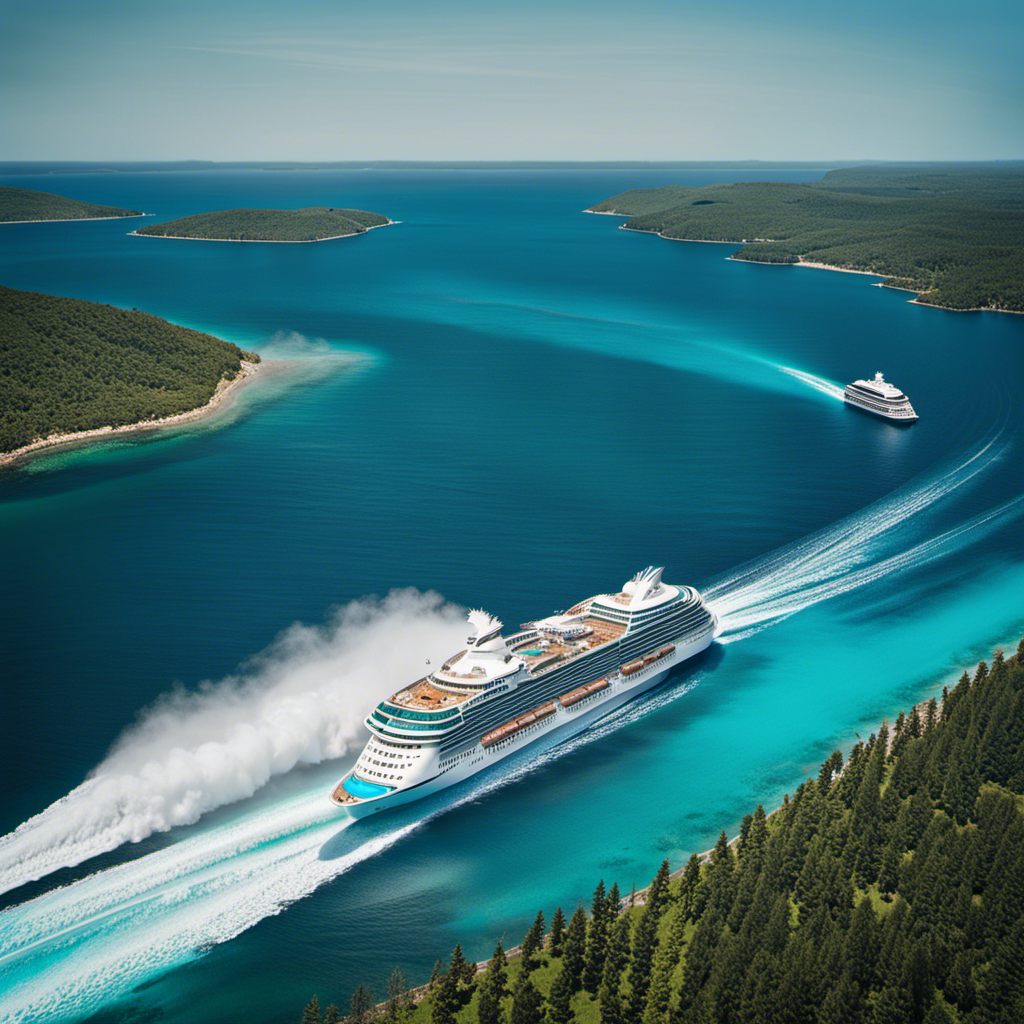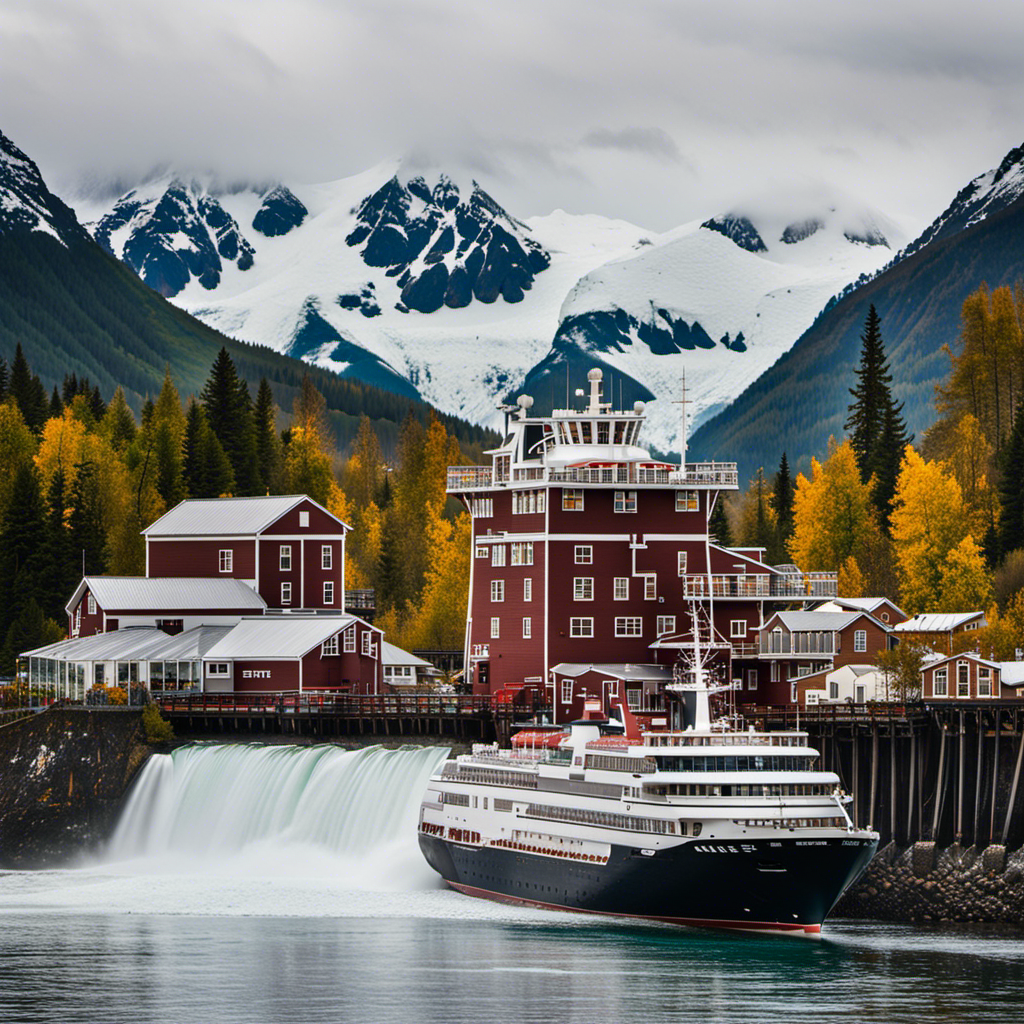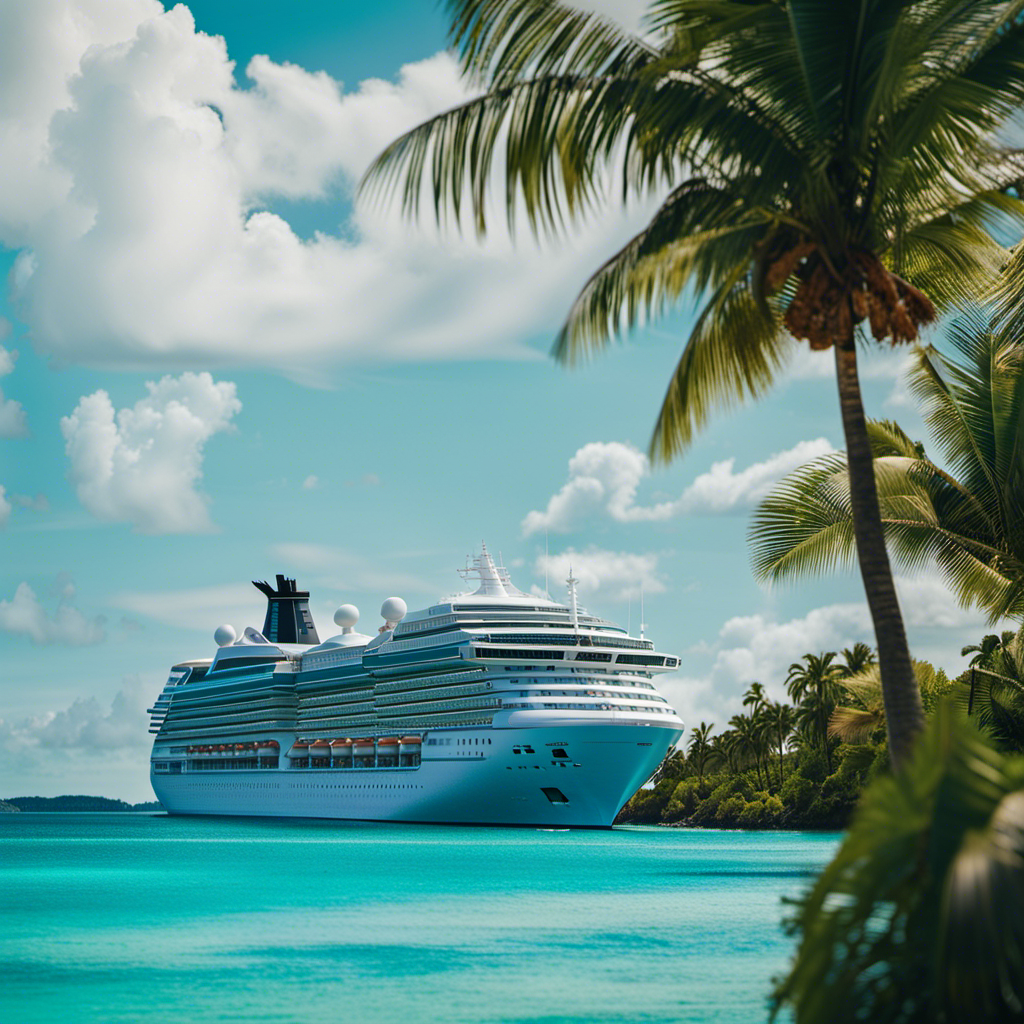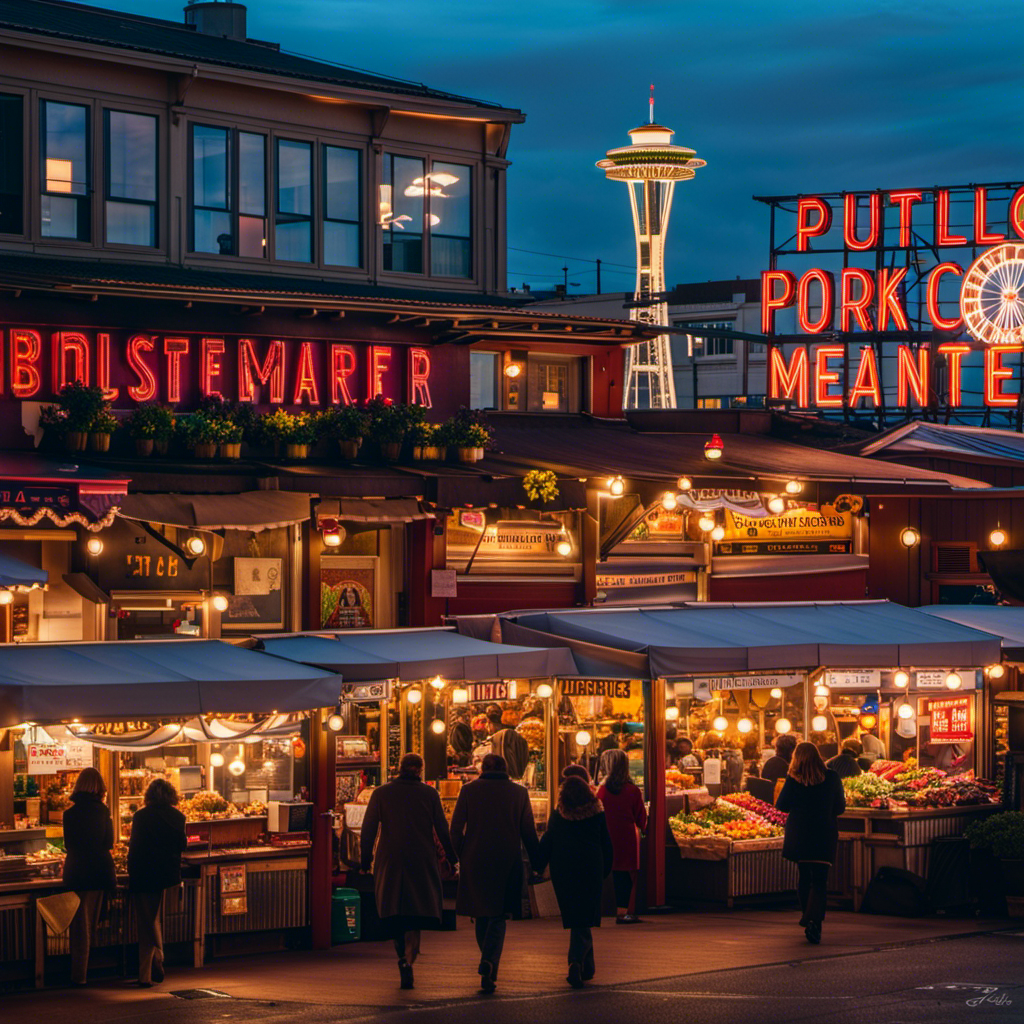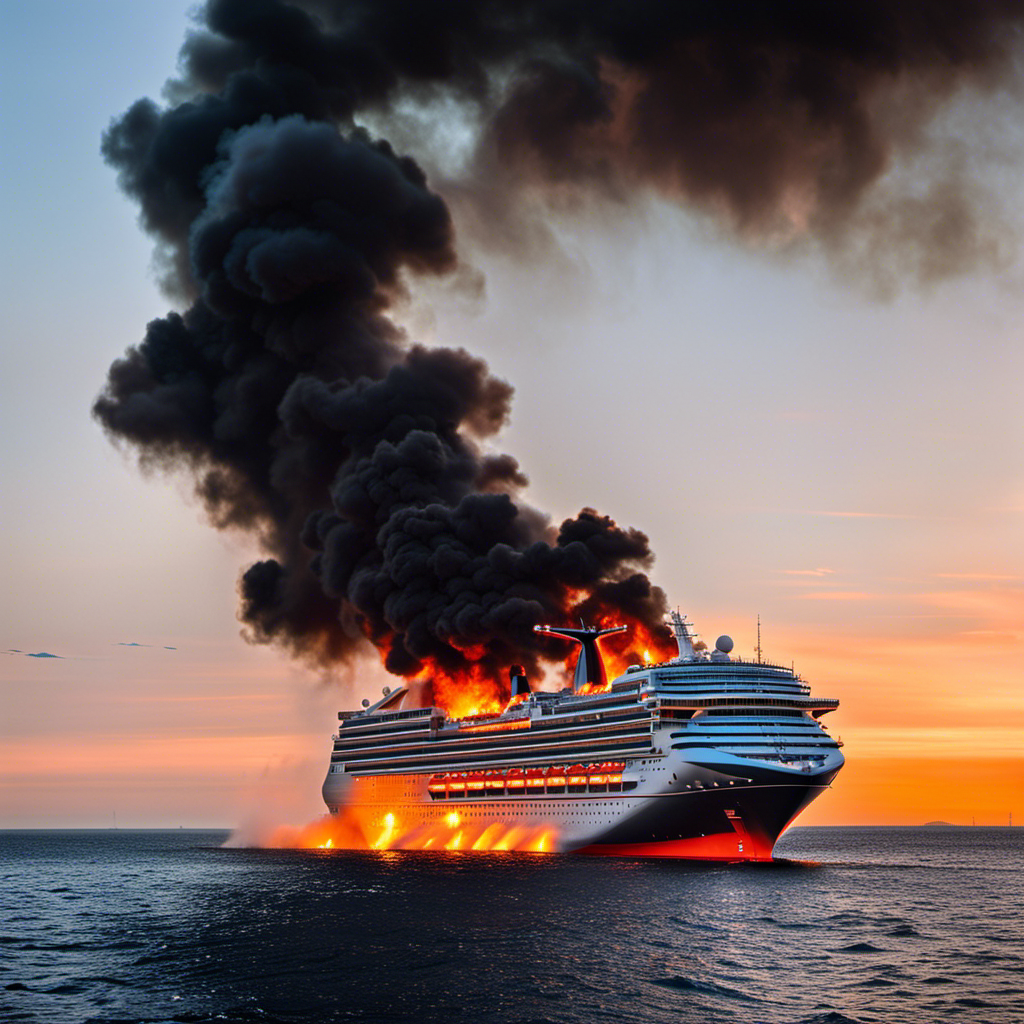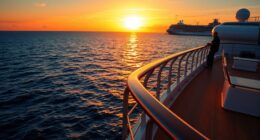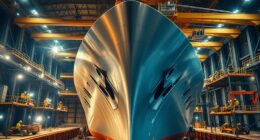I’ve always found myself fascinated by the incredible size and speed of cruise ships. Take, for example, the gigantic vessels like those in the Royal Caribbean’s Oasis class, which can accommodate around 6,700 guests and 2,200 crew members. With an impressive 225,000 gross tons and nearly 1,200 feet in length, they are genuinely remarkable engineering marvels.
But what surprises many is their cruising speed, which reaches about 22 knots, equivalent to 25 miles per hour. In this article, let’s delve into the surprising speed of cruise ships and explore the factors that affect it.
Key Takeaways
- The largest cruise ships, such as Royal Caribbean’s Oasis class, can hold nearly 6,700 passengers and 2,200 crew and have nearly 2,800 staterooms.
- Most cruise ships have a cruising speed of about 22 knots, which is roughly 25 miles per hour.
- A cruise ship’s speed of 25 miles per hour is comparable to many residential street speed limits and slightly slower than Usain Bolt’s sprinting speed of 28 miles per hour.
- The size and speed of cruise ships contribute to the overall experience and efficiency of cruise travel, impacting scheduling, fuel consumption, and passenger experiences.
The Size and Capacity of Cruise Ships
I’m amazed by the size and capacity of cruise ships, like Royal Caribbean’s Oasis class. These massive vessels can hold nearly 6,700 passengers and 2,200 crew. They measure roughly 1,200 feet long and boast 18 decks.
In addition to their impressive size, cruise ships offer a wide range of amenities to enhance the passenger experience. From luxurious staterooms to world-class dining options and entertainment venues, these ships cater to every need and preference.
Safety measures are also a top priority. Cruise ships are equipped with advanced navigation systems, emergency evacuation procedures, and rigorous training for the crew.
The combination of size, amenities, and safety measures make cruise ships an incredible feat of technology and innovation in the travel industry.
Cruise Ship Speed: A Closer Look
Traveling at a rate of 25 miles per hour, it’s impressive how quickly these massive vessels can navigate the open seas. The speed of cruise ships is a result of advanced cruise ship propulsion technology.
Most cruise ships have a cruising speed of about 22 knots, which is roughly 25 miles per hour. This speed is comparable to many residential street speed limits. However, the actual speed experienced by passengers may vary due to factors such as weather conditions.
Adverse weather, such as strong winds or rough seas, can impact cruise ship speed. In such cases, ships may slow down to ensure the safety and comfort of passengers. Understanding the impact of weather on cruise ship speed is crucial for the industry to provide a smooth and enjoyable experience for travelers.
Comparing Cruise Ship Speed to Land Speeds
Given their impressive size and speed, it’s fascinating to compare the cruising speed of cruise ships to land speeds.
Cruise ships typically have a cruising speed of about 25 miles per hour, which is comparable to many residential street speed limits.
In comparison, the average commercial airplane has a cruising speed of around 550 miles per hour.
This stark difference in speed can be attributed to various factors, including the impact of weather on cruise ship speed.
Adverse weather conditions such as strong winds and rough seas can significantly affect a cruise ship’s speed, causing it to slow down for safety reasons.
Additionally, scheduling constraints and fuel consumption considerations may also influence a cruise ship’s speed.
Understanding these dynamics is crucial for the cruise industry to ensure efficient and enjoyable travel experiences for passengers.
Factors Affecting Cruise Ship Speed
The factors that can affect the speed of a cruise ship include adverse weather conditions, scheduling constraints, and fuel consumption considerations.
Adverse weather conditions such as strong winds or rough seas can slow down a cruise ship, as the captain prioritizes the safety and comfort of the passengers and crew.
Scheduling constraints also play a role, as ships are often required to arrive at ports on time, which may necessitate sailing slower to maintain the schedule.
Additionally, fuel consumption is a significant factor in determining cruise ship speed. Higher speeds require more fuel, so ships may choose to slow down to conserve fuel and reduce costs.
These factors impacting cruise ship speed can result in slower speeds, but they are necessary for the smooth operation and efficiency of the cruise industry.
The Importance of Cruise Ship Size and Speed
I’m amazed at how massive and fast these floating cities can be. The size and speed of cruise ships have a significant impact on passenger experiences and fuel consumption. Let’s take a closer look at the role of cruise ship size and speed in these aspects.
First, let’s talk about size. The largest cruise ships, such as Royal Caribbean’s Oasis class, are roughly 225,000 gross tons and measure nearly 1,200 feet long with 18 decks. They can hold nearly 6,700 passengers and 2,200 crew, offering nearly 2,800 staterooms. This immense size allows for a wide range of amenities and entertainment options, ensuring a memorable experience for passengers.
Now, let’s consider speed. Most cruise ships have a cruising speed of about 22 knots, which is roughly 25 miles per hour. While this may not seem fast compared to land speeds, it is impressive considering the size of these vessels. The cruising speed of 25 miles per hour is comparable to many residential street speed limits. However, it is important to note that passengers may not always experience the ship’s maximum speed during their trip.
The impact of size and speed on passenger experiences is undeniable. The engineering and logistics involved in moving these massive structures at such speeds are truly remarkable. Passengers can enjoy the thrill of cruising the open seas while experiencing a sense of luxury and comfort onboard.
Furthermore, the size and speed of cruise ships also play a role in fuel consumption. Faster speeds require more fuel, so ships may slow down to save on costs and reduce their environmental impact. Additionally, shorter distances between ports may result in slower cruising speeds. Ships sailing longer distances on tighter schedules may reach their maximum cruising speed to maintain their itineraries.
The Fascinating Engineering and Logistics of Cruise Ship Speed
It’s incredible to think about the engineering and logistics involved in achieving such impressive speeds on these massive floating cities. The technology behind cruise ship propulsion plays a crucial role in their ability to reach speeds of up to 25 miles per hour.
Powerful engines, such as diesel-electric or gas turbine systems, provide the necessary force to propel these enormous vessels through the water. However, weather conditions can have a significant impact on cruise ship speed. Strong winds, rough seas, and adverse weather conditions can slow down a ship’s progress and even result in itinerary changes for safety reasons.
Cruise lines closely monitor weather patterns and make adjustments to ensure the comfort and safety of passengers and crew. The ability to navigate and adapt to changing weather conditions is a testament to the expertise and planning involved in the operation of these floating marvels.
Frequently Asked Questions
How Fast Can the World’s Fastest Man, Usain Bolt, Run Compared to a Cruise Ship’s Speed?
Usain Bolt, the world’s fastest man, can reach speeds of up to 28 mph. In comparison, a cruise ship’s speed of 25 mph is impressive considering its size. Both speed and size affect fuel efficiency.
How Long Would It Take for a Cruise Ship to Travel From New York to Los Angeles if It Could Sail on Land?
If a cruise ship could sail on land, it would take about 100 hours to travel from New York to Los Angeles. That’s surprising considering their massive size, but it’s important to note the safety measures and environmental impact of such a journey.
Why Do Cruise Ships Sometimes Sail Slower Than Their Maximum Cruising Speed?
Cruise ships sometimes sail slower than their maximum speed due to factors like fuel efficiency and environmental impact. Slowing down can save fuel consumption, especially on shorter distances or tight schedules, ensuring timely arrivals at ports.
Do All Passengers on a Cruise Ship Experience the Ship’s Maximum Speed During Their Trip?
No, not all passengers on a cruise ship experience the ship’s maximum speed during their trip. The ship’s speed may be adjusted for passenger safety and to account for weather conditions that could affect the comfort and stability of the ship.
How Does the Size and Speed of a Cruise Ship Impact Scheduling, Fuel Consumption, and Passenger Experiences?
The size and speed of a cruise ship impact scheduling, fuel consumption, and passenger experiences. Larger ships may have more flexibility, while faster speeds may sacrifice fuel efficiency. Moreover, weather conditions can also affect the ship’s performance.

